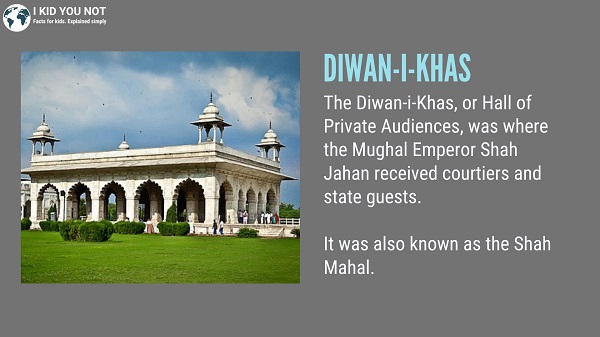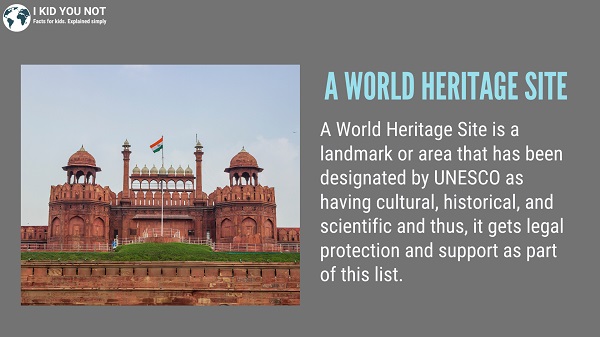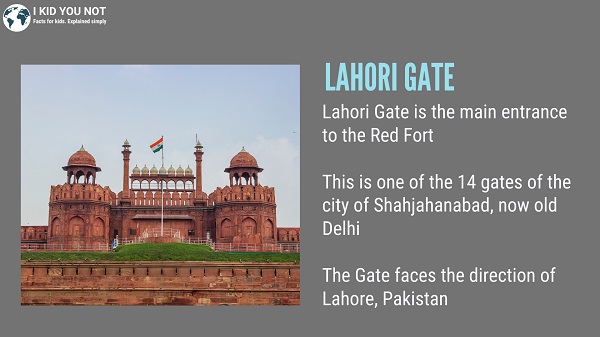Fun Facts About the Red Fort
Written by Aindrila Jana, senior writer
Did you know that the Red Fort was originally white?
Written by Aindrila Jana, senior writer
Red Fort or, the Lal Qila, as it’s called in Hindi, is a historical fort located in Old Delhi.
Here’s a quick word about its history
It was constructed by Shah Jahan, who was the fifth Mughal Emperor of India, as a palace for the capital city of Shahjahanabad – which is now old Delhi.
Originally named Qila-i-Mubarak, which translates as ‘the Blessed Fort’, the construction started on 12th May 1638 and took over 8 years to complete. It was designed by the famous architect Ustad Ahmad Lahori, who constructed the Taj Mahal too. It represents the peak of Mughal architecture and is a sign of Mughal power and majesty.
Originally, the Yamuna river flowed past the walls of the fort. This is why it was seen as the best place to construct the fort – on the banks of a river.
Top 10 Fun Facts About the Red Fort In 2022
1. The Red Fort was originally white in colour
It is believed by historians and architects that the Red Fort was built in a red-white contrast, where most of the fortifications and enclosures were made using red sandstone, while marble and limestone were used for the other, more private structures, like the mahals and the living quarters.

There are two theories about how it became all red. One – that when the white stone gradually started shedding off around 1857, more than 200 years after it was built, the British painted it red.
The other theory is that when the British did not use the traditional masons to upkeep the structure, who were skilled in grinding white marble to make bright lime plaster, and used methods that led to the structure becoming red.
2. It’s part of the list of World Heritage sites

In 2007, the Red Fort was designated as a UNESCO World Heritage Site – UNESCO stands for United Nations Educational, Scientific and Cultural Organization.
Did you know that independent India’s first Prime Minister, Jawaharlal Nehru delivered his first speech addressing independent India in this architectural wonder in Delhi?
3. The entrance of the Red Fort is named Lahori Gate

The Delhi Gate and the Lahori Gate are the two main gates of the Red Fort. Every Independence Day, the Prime Minister hoists the national flag of India from the ramparts of Lahori Gate.
4. Fusion architecture
Red Fort’s architecture reflects a mix of Persian, Timurid, and Indian traditions
5. The Kohinoor and Peacock throne was once a part of it
The Kohinoor diamond, which is now placed on the Crown of the British Queen in London , had once adorned the magnificent royal Peacock Throne which was placed inside the Diwan-i-Khas situated within the Red Fort in Delhi.

Both the Peacock Throne and the precious Kohinoor diamond were stolen by Nadir Shah, the Persian ruler.
6. The fort consisted of a third exit gate along with the main two gates
This minor gate was built on the banks of the river Yamuna originally to ensure easy access to the river beside the fort.
7. A brilliant example of Mughal architecture in Delhi
The Red Fort is spread across around 255 acres of land and its shape is octagonal. It has an intricate pattern of marble work, a mosaic of mirrors, and also contains ruins of the old Persianate palace architecture.
8. The Red Fort took about a decade to be built.
The pioneering architects were Ustad Hamid and Ustad Ahmed. The construction began in 1638 and was completed about a decade later.
9. Bahadur Shah Zafar was tried for treason
Bahadur Shah Zafar, the last Mughal Emperor was tried for treason (disloyalty) in his own home – the Red Fort, by the British government. The trial was held in Diwan-i-Khas, also known as the Hall of Private Audiences, which was a chamber in the Red Fort as a location for receiving courtiers and guests.
When the emperor was found guilty, he was stripped of his official title. Finally, he was sent to exile in Rangoon – a city in what was then Burma is today known as Myanmar.
10. The British demolished various parts of the Red Fort after 1857.
Most of the valuables were sold, leaving the ancient 200 years residence of the Mughal Emperors empty.
Construction and History of the Red Fort
The construction of the Red Fort began on 13th May 1638 in the sacred Islamic month of Muharram. It was supervised by Shah Jahan and was completed on 6th April 1648. Then lying along the Yamuna River (now the Yamuna does not flow that way), Shah Jahan’s favorite colours, red and white were used during its construction. It was located in what was then the city of Shahjahanabad, present-day Old Delhi.
When Shah Jahan moved his capital from Agra, he came to Shahjahanabad, where he commissioned the construction of the palace. After him, the fort was home to many other kings and rulers, like Aurangzeb (his son who imprisoned him) Jahandar Shah, Muhammad Shah, and Bahadur Shah II, etc.
As mentioned earlier, the Red Fort faced destruction in 1739, when the Persian ruler Nadir Shan invaded the city and plundered the Red Fort. He took almost all the precious jewels and artefacts, including the Peacock Throne.
In 1857, when the Indian soldiers revolted against the British, the fort’s ornate and beautiful marble structures were destroyed.
Later, the Marathas removed and melted the silver ceiling of the Diwan-i-Khas in 1760 to raise funds for defending the city of Delhi from the armies of Ahmed Shah Durrani.
Maharaja Jawahar Singh, the Jat ruler of Bharatpur, attacked Delhi and captured the Red Fort on 5 February 1765. Then the Jats took away the throne of the Mughals, which was also famed to be the pride of the Mughals, and the doors of the Red Fort as memorials. This throne enhances the beauty of the palaces of Deeg today. The doors are kept in the Lohagarh Fort of Bharatpur.
A Maratha garrison occupied the Red Fort alongside providing protection to the Mughal Emperor in 1788.
The East India Company forces defeated the Maratha forces of Daulat Rao Scindia during the Second Anglo-Maratha War. This ended the Maratha control over Delhi and the Red Fort. Then, the British East India Company took over the administration of the Mughal territories.
Bahadur Shah II, a symbol of the 1857 rebellion against the British East India Company, was the last Mughal emperor to occupy the Red Fort.
Structure of the Red Fort
The Red Fort is octagonal (octagonal means – having the shape or cross-section of an octagon; eight-sided) in shape, with its north-south axis being longer than its east-west axis – though it gives the appearance of being rectangular.
The Fort has ornate yet intricate floral carvings and contains double domes which characterize the richness of Mughal architecture. The artwork of the Red Fort is a synthesis of Persian, Islamic, Timurid and Indian art styles and hence creates a unique Shahjahani style which is rich in form, expression and colour.
It covers an area of 254.67 acres, enclosed by 2.41 kilometers of defensive walls, contains turrets and bastions that vary in height from 59 ft on the river side to108 ft on the city side.
Its massive enclosing walls are 2.5-km-long and are made of red sandstone. This is where the monument got its name from. A few other parts of the fort are also constructed using red stone while parts of the remaining structure is built using marble. It also consists of turrets, bastions, pavilions, two gates and several other parts.
Security and Protection
Did you know that on the eve of the Independence Day of India, the security is especially very strict around the Red Fort to prevent terrorist attacks. A strict watch is kept on neighborhoods surrounding the Red Fort by the Delhi Police personnel and the paramilitary personnel. National Security Guard sharpshooters are deployed on high-rise buildings around the fort.
To prevent air attacks, the airspace around the Red Fort is a designated no-fly zone during the celebration. There are provisions of safe houses existing in nearby areas for the Prime Minister and other Indian ministers and leaders to retreat in case there’s a sudden attack.

Better Your Child’s G.K. In 3 Minutes – Get This Free Newsletter
Get fun facts, simple and easy news, quizzes, and lots of other interesting things to read in your mailbox – for free! It’s what we call GK-on-the-go!
I Kid You Not now has a large readership across India and also parts of the world. If you want to write for us, you can submit your story here. You can also apply to become a news anchor. Apply here



Comments